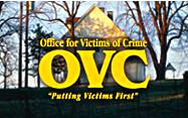Rural Community Dynamics
Rural areas face significant economic, geographic, and manpower barriers that make it difficult to create, strengthen, or expand victim assistance services. Although they are often equated with open space, tranquility, a strong sense of community, and strong family values, rural communities suffer many of the same negative dynamics that urban communities suffer and, in some cases, more intensely. Single-parent households are on the rise, as are births to unmarried and teenage mothers; the average level of education tends to be lower among rural residents than among urban residents; rural youth are more likely to drop out of high school and less likely to return to school or to obtain a GED; and rural poverty rates are higher than urban poverty rates (National Center on Rural Justice and Crime Prevention (NCRJCP) 2002).
In addition to these dynamics, rural communities have not experienced the same economic growth that urban and suburban areas have had in the past decade. In fact, rural communities have historically experienced low rates of economic growth and high rates of unemployment and underemployment (Weisheit and Wells 1998). All of these dynamics can lead to increasing crime in rural communities.
In urban areas, some of these conditions can be addressed through an array of programs and services designed to attend to the needs of at-risk populations. But many rural communities lack available community-based or publicly funded service programs. Rural communities are less likely than urban or suburban communities to have childcare programs, public transportation, or shelters for homeless people or abuse victims (NCRJCP 2002). These and other service limitations have enormous impact on crime victims.
|







